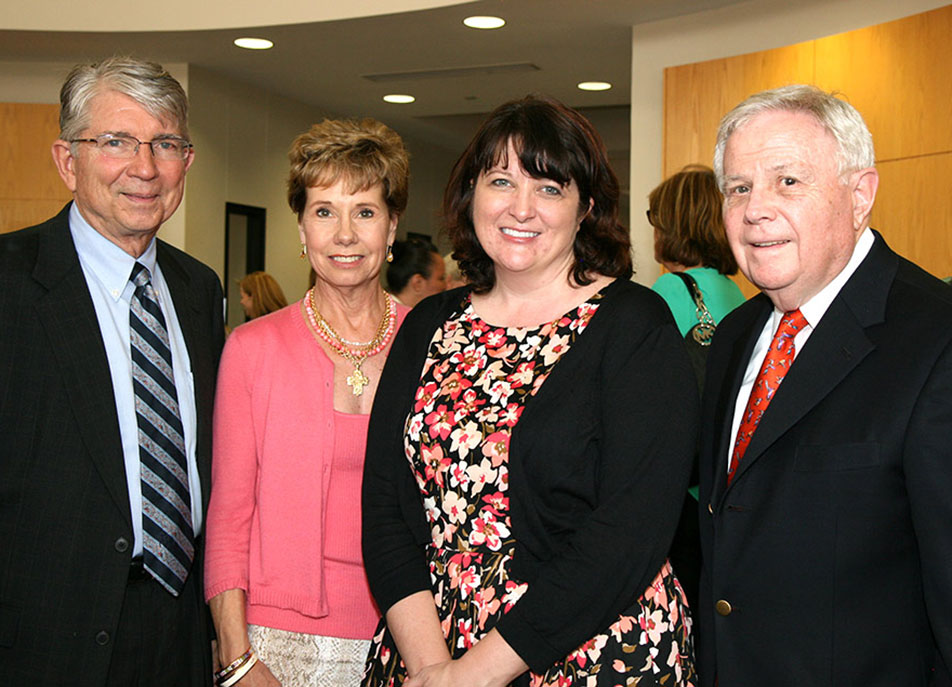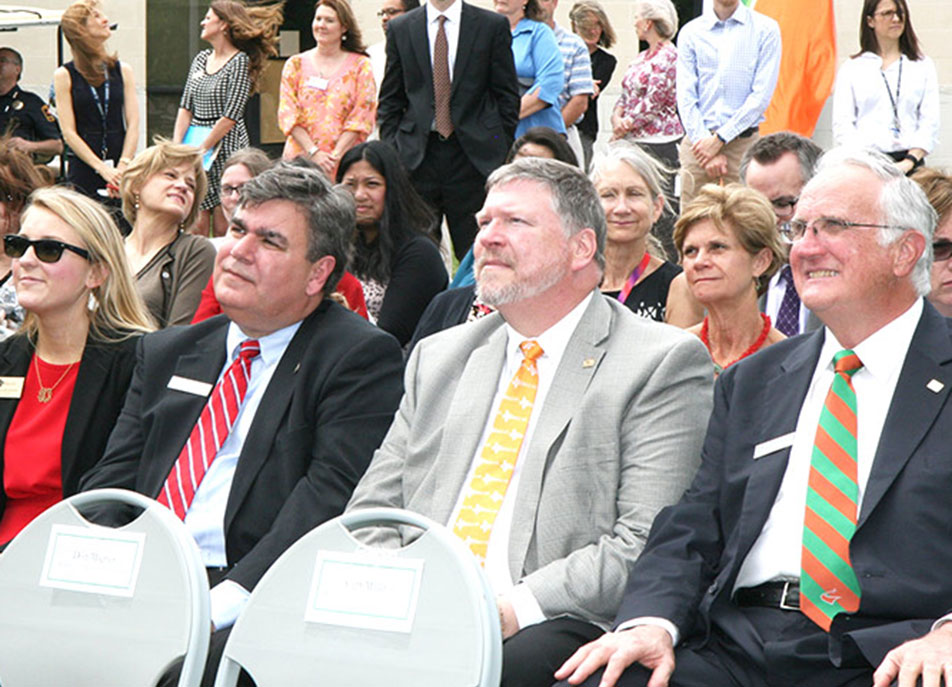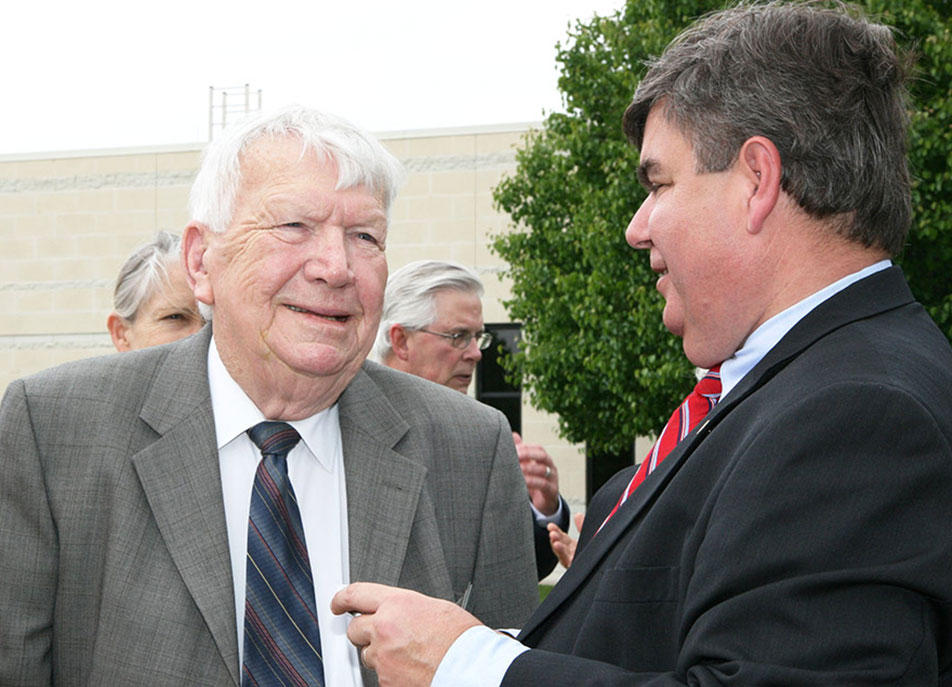Callier Center Expansion to Provide Additional Clinical, Research and Educational Programs
By: | May 1, 2015
An expansion of the Callier Center for Communication Disorders will increase patient services, as well as research and student training — growing what already is one of the largest graduate school programs in the U.S. for communication disorders.
Construction soon will begin on the expansion at Callier’s Richardson location, resulting in larger clinical facilities, additional research space, and more classrooms and offices. A groundbreaking was held recently for the project. Leaders of the center said the expansion will allow more patients to be treated and will attract top researchers.
“The opportunity to expand our faculty and programs will allow Callier to continue to be an important educational and community resource for the next 50 years and beyond,” said Dr. Bert Moore, dean of UT Dallas’ School of Behavioral and Brain Sciences and Aage and Margareta Møller Distinguished Professor.
The Callier Center is one of the few communication disorder centers in the U.S. that provides education, research and treatment in one program. U.S. News & World Report has ranked Callier’s speech-language pathology and audiology programs in the top 4 percent nationally. The center has clinics in both Dallas and Richardson, and offers evaluation and treatment in all areas affecting communication, including hearing impairment and speech and language disorders that range from autism to tinnitus.
The Richardson project will include construction of a new 50,000 square-foot facility as well as a repurposing of the current 20,000 square-foot building, totaling 70,000 square feet of program space.
Dr. Thomas Campbell, Ludwig A. Michael, MD, Executive Director of the Callier Center and Sara T. Martineau Professor, said the expansion will revolutionize patient care for generations to come.
“The expansion will create state-of-the-art clinical facilities to treat patients and train upcoming practitioners in the fields of speech-language pathology and audiology,” he said. “It also will provide the space necessary to build the highest quality research laboratories and technology suites in the country that will draw the attention of world-class scientists.”
The new building will increase Callier’s clinical service and training capacity 63 percent, and its academic and research capacities 80 percent. Furthermore, it provides a base for undergraduate students majoring in communication sciences and disorders, which is estimated to increase 30 percent over the next five years.
In June 1963, the Callier Hearing and Speech Center was incorporated as an independent, nonprofit, community-based institution to provide educational programs for deaf children in Dallas County. The impetus for the center came from a trust established by the estate of Mrs. Lena Callier. Eventually, services expanded, and the name changed to the Callier Center for Communication Disorders. In 1975, the center became part of UT Dallas, and in 2003 it added an on-campus location in Richardson.
Last year, the Callier Center provided more than 32,000 services to patients in both clinics, and UT Dallas officials estimate that clinical activity will grow 30 percent by 2017.
“What began as one woman’s dream has developed into the foremost speech, language and hearing resource for North Texas, and one of the most renowned such centers in the nation. But we aren’t finished yet,” Moore said.
He also said that when the expanded Callier Center opens its doors in the fall of 2016, the space will support growth in patient services, which will sustain clinical training of the growing speech-language pathology and audiology undergraduate student population.
“In addition, our undergraduate students majoring in communication sciences and disorders will finally have a place to call home,” Moore said. “The new facility will also allow for greater interactions with other components of the school such as the Center for Children and Families, which will also be housed there.”
The expansion is expected to be complete in August 2016.
Media Contact: The Office of Media Relations, UT Dallas, (972) 883-2155, newscenter@utdallas.edu.












